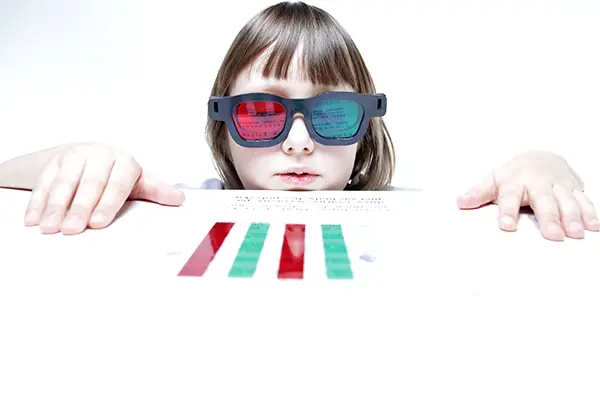Vision Therapy
Vision therapy (also known as vision training or VT) is an individualised program designed to remediate & enhance an indivisual’s visual skills.
Contact us now for your Vision Therapy enquiry.
What is Vision Therapy used for?
Vision Therapy is used to treat existing visual problems such as eye teaming or alignment problems, amblyopia (lazy eye), eye-coordination problems, poorly sustained near focus, inefficient eye movement control, poorly developed eye-hand coordination and immature visual perceptual development. Vision therapy might also be helpful in some cases of vertigo, motion sickness and acquired brain injury.
It is used to enhance the efficiency and comfort of visual function and to help prevent some visual problems from developing.
Vision Therapy is used to assist or minimise some learning difficulties by reducing visual inefficiencies only where these are present. Many children who experience academic difficulties may have a visual dysfunction or inefficiency in the way their visual system is working in addition to their primary reading or learning problem.
What isn't Vision Therapy used for?
Vision Therapy isn’t used to strengthen eye muscles, but rather it is used to improve the coordination & functioning of the visual system.
What does Vision Therapy involve?
Vision therapy is a progressive program of activities performed under the supervision of your optometrist. It is individualised to fit the visual needs of each patient.
Vision therapy is ideally conducted in-office, in once weekly or fortnightly sessions of 30 minutes to one hour. It is supplemented with procedures done at home between office visits (“home reinforcement” or “homework”).

Treatment devices may be used such as:
- Corrective lenses (regulated medical devices).
- Therapeutic lenses (regulated medical devices).
- Prism lenses (regulated medical devices).
- Optical filters and coloured lenses.
- Eye patches or occluders.
- Electronic targets with timing mechanisms.
- Specific computer software.
- Vestibular (balance) equipment.
- Visual-motor-sensory integration training devices.

The latest addition to our Vision Therapy program for amblyopia (lazy eye) & strabismus (turned eye) is the Vivid Vision 3D virtual reality system. For more information on Vivid Vision. The latest addition to our Vision Therapy program for visual development, eye movements & eye teaming is the EYEBAB digital platform.


Please note
- While vision problems can affect learning we understand that not all learning problems are necessarily associated with vision problems.
- Vision problems do not “cause ” learning disabilities.
- However, poor visual skills can interfere with the process & might impede remedial efforts.
- Optometrists DO NOT directly treat learning difficulties.
- Vision therapy DOES NOT take the place of teaching.
- Behavioural optometric care constitutes just one aspect of the multi-disciplinary management approach required to help an individual meet their full potential.
